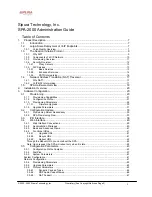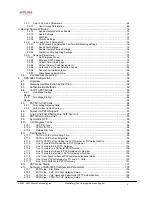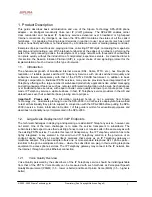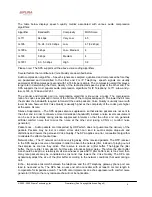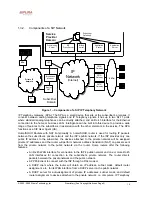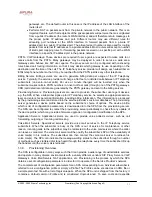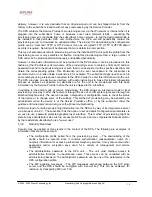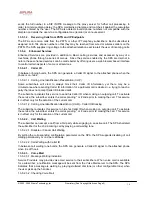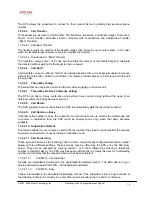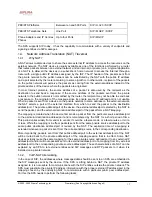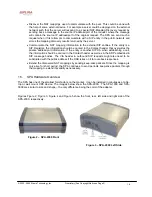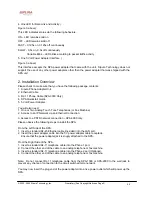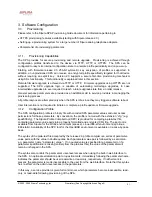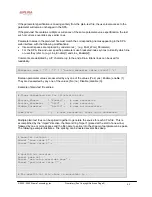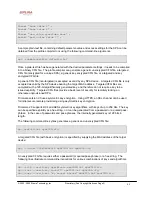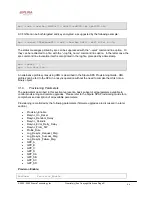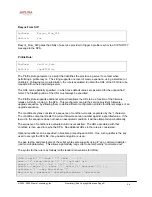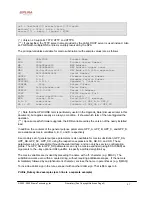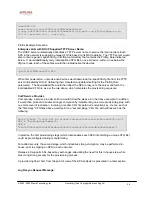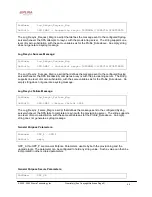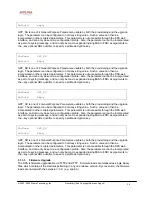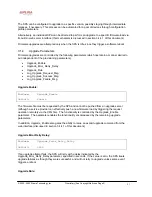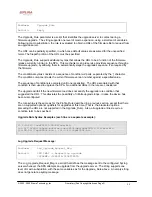
© 2003 - 2005 Sipura Technology, Inc
Proprietary (See Copyright Notice on Page 2)
17
PBX/KTS Platforms
Between ten and 500 Ports
SIP / H.323 / SCCP
PBX/KTS Telephone Sets
One Port
SIP / MGCP / SCCP
Phone Adapters and IP Centrex
Phones
Up to four Ports
SIP / MGCP
The SPA supports SIP today. It has the capability to communicate with a variety of endpoints and
signaling entities via SIP messages.
1.4.
Network Address Translation (NAT) Traversal
1.4.1. Why
NAT?
A NAT allows multiple devices to share the same external IP address to access the resources on the
external network. The NAT device is usually available as one of the functions performed by a router
that routes packets between an external network and an internal (or private) one. A typical application
of a NAT is to allow all the devices in a subscriber’s home network to access the Internet through a
router with a single public IP address assigned by the ISP. The IP header of the packets sent from
the private network to the public network can be substituted by the NAT with the public IP address
and a port selected by the router according to some algorithm. In other words, recipient of the packets
on the public network will perceive the packets as coming from the external address instead of the
private address of the device where the packets are originated.
In most Internet protocols, the source address of a packet is also used by the recipient as the
destination to send back a response. If the source address of the packets sent from the private
network to the public network is not modified by the router, the recipient may not be able to send back
a response to the originator of the message since its private source IP address/port is not usable.
When a packet is sent from a device on the private network to some address on the external network,
the NAT selects a port at the external interface from which to send the packet to the destination
address/port. The private address/port of the device, the external address/port selected by the NAT to
send the packet, and the external destination address/port of the packet form a NAT
Mapping
.
The mapping is created when the device first sends a packet from the particular source address/port
to the particular destination address/port and is remembered by the NAT for a short period of time.
This period varies widely from vendor to vendor; it could be a few seconds, or a few minutes, or more,
or less. While the mapping is in effect, packets sent from the same private source address/port to the
same public destination address/port is reused by the NAT. The expiration time of a mapping is
extended whenever a packet is sent from the corresponding source to the corresponding destination.
More importantly, packets sent from that public address/port to the external address/port of the NAT
will be routed back to the private address/port of the mapping session that is in effect. Some NAT
devices actually reuse the same mapping for the same private source address/port to any external IP
address/port and/or will route packets sent to its external address/port of a mapping from any external
address/port to the corresponding private source address/port. These characteristics of a NAT can be
exploited by an SPA to let external entities send SIP messages and RTP packets to it when it is
installed on a private network.
1.4.2. VoIP-NAT
Interworking
In the case of SIP, the addresses where messages/data should be sent to an SPA are embedded in
the SIP messages sent by the device. If the SPA is sitting behind a NAT, the private IP address
assigned to it is not usable for communications with the SIP entities outside the private network. The
SPA must substitute the private IP address information with the proper external IP address/port in the
mapping chosen by the underlying NAT to communicate with a particular public peer address/port.
For this the SPA needs to perform the following tasks:

